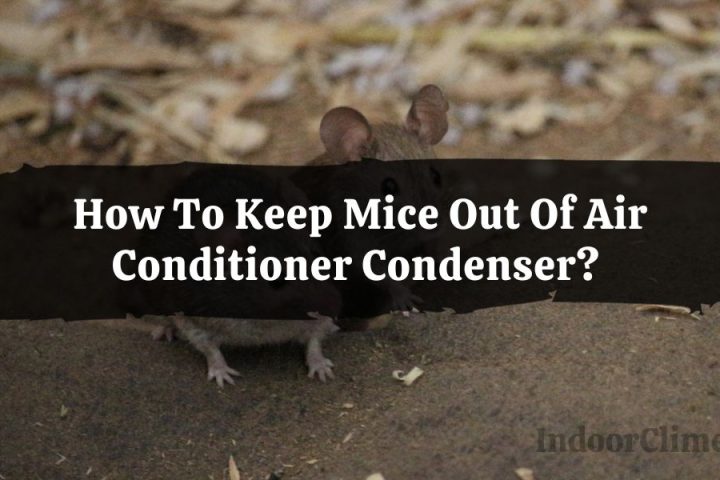The energy lost in the areas around window air conditioners is incredible. If you sleep near a window air conditioner, the situation is considerably more intimate.
Summer heat, humidity, and cold winter blasts are enough to frizz even the straightest hair and penetrate the warmest blanket.
To insulate around a window air conditioner various products, generally made of material with an elastic band like caulk, foams, or strips, are also available to cover the complete AC unit during the winter months to insulate around the window air conditioner.
This tutorial will show you how to make a clean surface while providing adequate insulation. It covers all the air leaks around a window AC unit, including the side panels, the region above the AC unit, and the sections above the side panels where the moist air is lost.
How to Insulate Around a Window Air Conditioner?
Step 1: Identify Any Air Leaks Around the Air Conditioner
Your air conditioner is a finely tuned mechanism that moves air around your house and through your AC unit with great precision.
An air leak occurs when a gap allows air to flow in the wrong direction—air leaks into your attic rather than escaping through your AC vents when a duct leak occurs.
You may also have leaks around outlets or light fixtures, allowing air to enter your walls. Many leaks occur around windows and doors, allowing air to escape instead of cooling your home.
Look at the window to see whether it has any cracks. This also entails looking on top of the unit.
Many people disregard this section because they believe the window is sufficiently secure; it holds the air conditioner in place.
However, there may be a little gap between the window and the AC unit, allowing outside air while keeping the warm air inside out.
A leak can sometimes be severe enough to place your hand over it and feel the air rush by. You can also see if the spot moves by holding a piece of tissue paper.
When you light something that produces visible smoke, the smoke will whirl or flow when it comes into contact with a leak.
It’s ideal for keeping your unit clean and clear of dust, debris, oil, or anything else that could prevent it from properly adhering to the window or breaking down.
A leak can occur almost anywhere in your home with a gap or split. While your air conditioner is running, inspect all common indoor and outdoor leak spots.
Step 2: Insulate Around the Air Conditioner

Caulk is one of the most excellent products to seal cracks and keep your air conditioner in place. Caulk is best applied outside the unit to keep it in place and prevent air from passing through the gaps between the department and the window.
Using caulk, ensure the weather is cool and dry before you start. It’s best to aim for temperatures around 40 degrees Fahrenheit.
If there are any gaps between the window and the air conditioner unit, you can use rope caulk to fill them.
Spray foam insulation is an effective way to fill gaps between your air conditioner and the window.
However, as powerful as this substance is, it must be used cautiously because it sets in seconds and is exceedingly difficult to reverse once set.
It will, however, close all of the cracks. As a result, you should only utilize this option if you don’t plan on moving your air conditioner over the winter.
In using those insulation foam strips, here are four simple steps:
- Measure
- Cut foam
- Add foam panels
- Cover the outside unit
Step 3: Weatherize and Cover the AC
Weathering the window air conditioner will also help it last longer by keeping it from the destructive effects of the elements.
- Remove the exterior cover from the window air conditioner to see the internal components.
- Cover the unit with a substantial plastic rubbish bag, completely covering it, then tuck the bag’s excess sections inside to seal it.
- If necessary, use duct tape to keep the bag in place.
- Replace the exterior cover once this is completed.
Heavy fabric coverings developed specifically for window air conditioners are available at most hardware stores. These covers fit the unit’s exterior and protect it from seasonal factors such as heavy snow, rain, ice, and hail.
Pick one up and place it over your air conditioner to keep it safe and warm all winter.
These coverings are especially useful in a severe rainstorm, regardless of the season; remember not to run the unit while it is covered.
Use weather-stripping inside your home to seal gaps where the unit and extension panels meet the interior frame and window sash, around and behind the inside grille, if necessary. Cover the interior grille if there is still a draft.
What Can I Use To Insulate Around a Window Air Conditioner?

When insulating around window air conditioners, you’ll need materials that can be modified to fit snugly into the gaps, such as spray foam or caulk. After discovering all cracks and holes, you’ll want to utilize a flexible foam insulating solution.
Another alternative to foam or caulk an open-cell foam seal tape can be an alternative. This product has a high resilience weatherstrip that is durable and flexible enough to be efficiently compressed flat to form a seal with any shape.
This adhesive foam strip is an excellent flame retardant, has good heat insulation, and is resistant to oil and chemicals. Measure and cut the foam insulating strip with a sharp knife to fit the gaps and apertures detected.
How Do You Insulate a Window Air Conditioner For the Winter?
Knowing how to insulate a window air conditioner for the winter is one of the most effective ways to keep heating expenses down once the temperature drops.
There are two options for weatherizing the home with this air conditioning unit: cover and insulate around the team or eradicate the unit and close the window for the winter.
Should You Cover a Window Air Conditioner?
Window Air Conditioner Cover Outdoor
Follow the manufacturer’s winter storage directions if you leave your air conditioner in the window. If the manufacturer recommends covering the outside of an air conditioner, ensure no water is trapped within, as mold can form inside.
Then, when the weather is dry and mild, run the fan-only mode for several hours over a few days to dry the interior.
You can keep rainwater out of the air conditioner by covering it with a fitting cover or plastic sheeting when it has dried. Some manufacturers advise leaving the exterior exposed to allow moisture to escape naturally.







